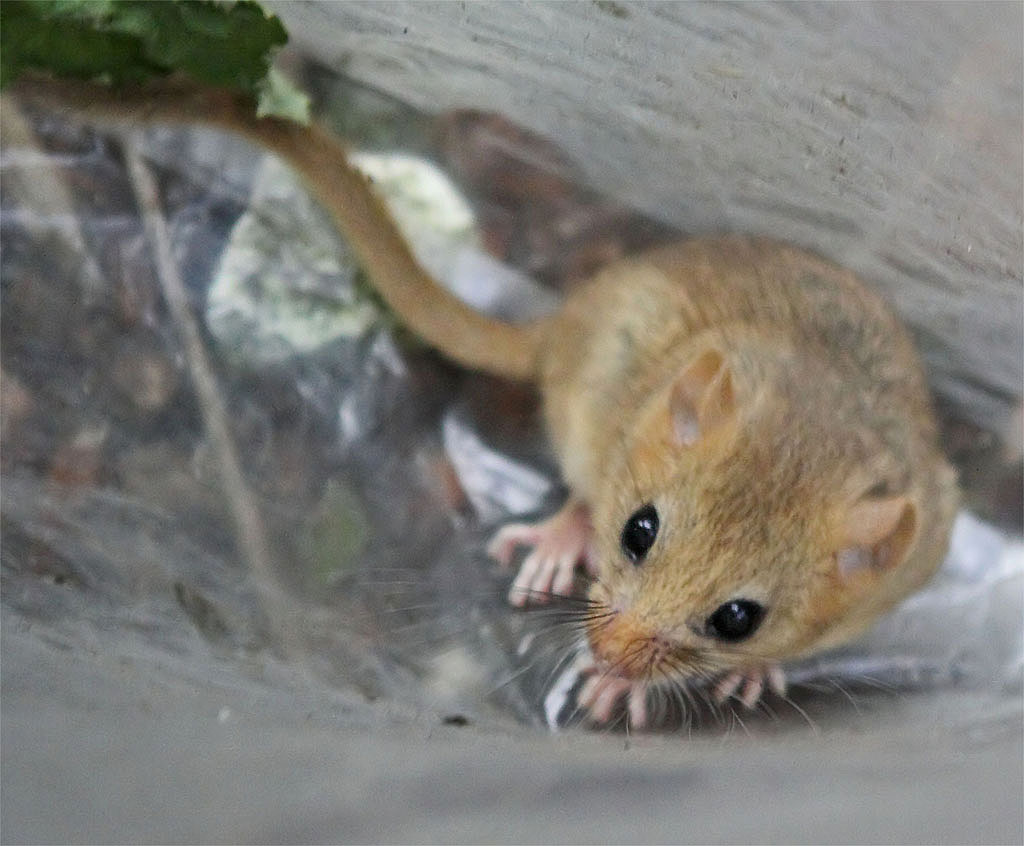Springtime is a tenuous thing. Hard to judge, if you’re a dormouse. Today there are blue skies and misty lanes; this time last year, we were being freeze-dried by bitter snow. To sleep or to wake? My guess is that some of our dormice are awake.

Hazel dormice have a message about the British countryside: about woods and hedgerows, flowers and fruits. Do we want to hear what these exquisite little creatures are telling us?
Perhaps not. For all their gold-plated national and international legal protection, dormice continue to slide towards extinction in Britain. We’ve pulled the rug away by wrecking the hedgerows that support them, and isolating and ruining woodland. Flaying, over-cutting and removing hedgerows where dormice are present is dangerously close to a criminal offence – and there is no legal defence for killing a dormouse of ‘incidental result of a lawful operation’. To my local district council and everyone else who manages Surrey’s surviving hedges: please note.
But there is a ray of hope.
Dormice can survive us. My village proves it. We thought we were preserving our historic landscape by turning our wooded lanes into a conservation area, but we accidentally saved our dormice too. This road is home to dormice – and people.

Thick, wide hedgerows, trees with branches that provide bridges over roads, ancient woodland with a jumbled understorey of hazel and bramble – they’re all things that dormice need.
I’ll be looking for them again in the spring. For nests like this, bound with hazel leaves and honeysuckle.

And maybe – just maybe – some of these.

Let’s keep hold of the hope. Surrey must always remain good enough for dormice.
All dormice in this post handled under licence. It is against the law to disturb, handle or harm dormice without a licence in the UK.
Fantastic post Adele. Well done xxx
________________________________
LikeLiked by 1 person
Thanks Mum xxx
LikeLike
Three Cheers for Surrey’s Dormice! May they live long and prosper!
LikeLiked by 1 person
I sincerely hope so! Looking forward to survey season starting again.
LikeLike
Such sweet little creatures. Sounds like a hopeful story!
LikeLiked by 1 person
They really are adorable 🙂 They are very hard to see in the wild because they’re nocturnal and keep to the tops of the trees. Most of my close-up sightings have been while checking the nest boxes as part of official surveys.
LikeLiked by 1 person
Absolutely precious!
LikeLiked by 1 person
They are, and it still amazes me to think that these little bundles of golden fur can sleep for up to seven months every year!
LikeLiked by 1 person
Ah, that’s where the idea for the sleepy dormouse in Alice in Wonderland came from. 🙂
LikeLiked by 1 person
So little but so important in the ecosystem of the area. Sometimes when we see slugs on a hiking trail, we move them to the side so they won’t be squished by ignorant hikers or mountain bikes. People sometimes laugh at us but we don’t care.
LikeLiked by 1 person
The world needs more people who care enough to do things like that. And yes, small things can be so important. One reason that I enjoy hiking is that it gives the opportunity to take in the smaller creatures are easily missed in car safaris.
LikeLike
I hadn’t thought before about the difficulties in reading the signs as to when to come out of hibernation.
Your post really does make it wonderfully clear what is meant by habitat destruction and its converse. Good on your village for choosing to preserve and conserve the environment in its lovely diversity. Not only do dormice and other creatures benefit, but we do too from the hopefulness and positive inspiration. Thanks.
LikeLiked by 1 person
Yes, there’s a significant energy cost to coming out of torpor and then – if the temperature plummets – going back into it. It’s a key thing for dormice and our other hibernators, such as bats, to get right. The other concern is that mild weather may tempt them out when there’s still limited food available.
Thank you. We have had our ups and downs with local conservation over the years but we still have some gems left.
LikeLiked by 1 person
Beautiful post always very interesting
LikeLiked by 1 person
Thank you Eva 🙂
LikeLike